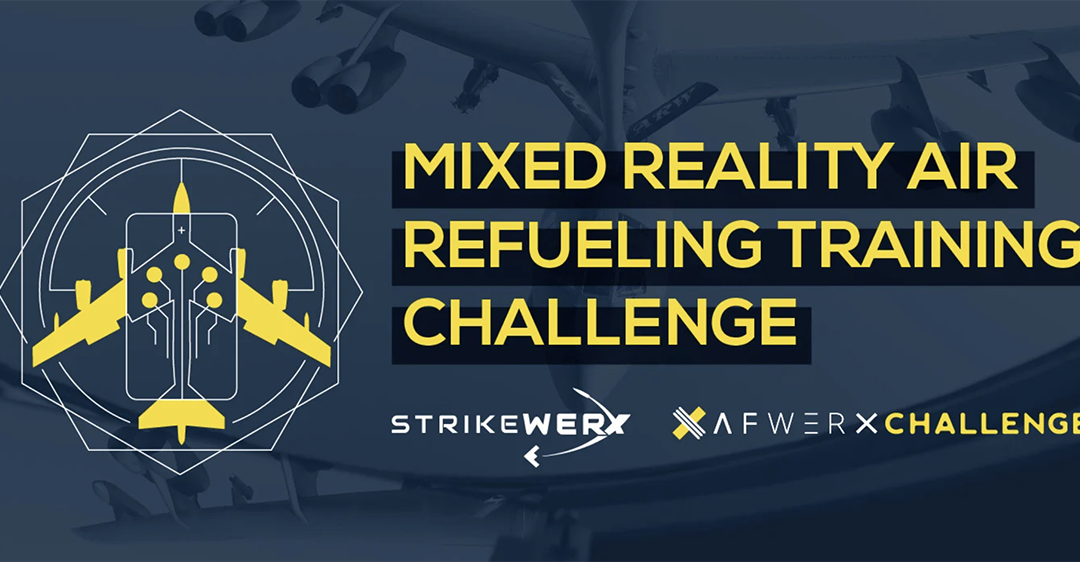By Sean Green | STRIKEWERX Director of Marketing and Communications
BOSSIER CITY, La. — Twenty-four companies have been selected to help revolutionize training for B-52 pilots in Air Force Global Strike Command.
STRIKEWERX, the Command’s innovation hub, is aiding Global Strike’s effort to build a state-of-the-art training capability for training pilots to accomplish air refueling in the B-52 bomber via the Mixed Reality Air Refueling Training Challenge.
The challenge launched in February and has progressed to see 24 finalists invited to pitch their solutions at the Showcase virtual event in July.
Those finalists are:
- Pison Technology
- Pathfinder Systems, Inc.
- Talon Simulations, LLC
- VR Training
- Lockheed Martin
- Aero Simulation Inc.
- Systems Technology, Inc.
- ACME Worldwide Enterprises, Inc.
- Visual Purple, Inc.
- Crosswater Digital Media
- Discovery Machine, Inc.
- Cole Engineering Services, Inc.
- NextGen Interactions
- Banc3
- WITTENSTEIN motion control Inc.
- Radiance Technologies, Inc.
- TakeFlight Interactive
- SimiGon Inc.
- Lumen (formerly CenturyLink)
- Bugeye Technologies
- FlightSafety Defense Corporation
- L3Harris, Link
- Vertex Solutions, LLC
- DeployX LLC
“Inflight refueling is a difficult task that requires many additional training sorties, which is complicated further by the world-wide demand for a limited number of tankers, bomber aircraft availability and weather. The current B-52 simulator isn’t coded to provide realistic aerial refueling” explained Russ Mathers, STRIKEWERX director. “This is why we are so excited to see the overwhelming response from industry and have a wealth of exciting potential solutions to solve this issue.”
This challenge event is designed to bring together the best solutions from industry and academia that will develop a trainer which allows pilots to learn this essential skill more quickly.
The challenge will combine Artificial Intelligence, Virtual/Augmented Reality and a physical model of the flight deck to make pilots safer and more efficient.
The challenge is seeking to solve four parts:
- The human-machine interface, which is the replication of control on the flight deck
- An automated virtual instructor in order to allow for students to practice by themselves
- Biometrics to provide accurate feedback in the training program
- Making the model reconfigurable for other aircraft by the swapping out of controls
“This challenge combines VR, physical components, biometrics, and AI to develop a complete solution for training pilots in a cost-effective, time conscious way,” Mathers added. “We look forward to hearing industry showcase their solutions to these components.”


